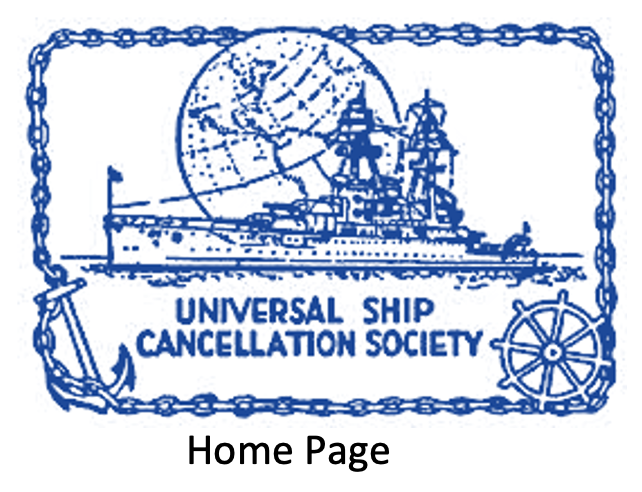The Evolution of Naval Cover Collecting
Synopsis
By Steve Shay of the Universal Ship Cancellation Society
Purpose of the Exhibit
The purpose of the exhibit is to show the evolution of naval cancel and cover collecting. This specialty hobby can trace its roots to the very early 1900’s. From a hobby focused on postmarks, it changed into a hobby more focused on cachets and remains so today, although postal history remains a strong interest of the hobby.
Challenge Factor
The covers in this exhibit are a collection of common and very hard to find covers, mirroring what the hobby is really like. Many of the cards and covers are one of a kind or found in quantities of 25 or fewer copies.
What is Presented
The exhibit begins with the 1908 special Great White Fleet cancellations used in Japan, the earliest naval postal material designed as a collectible. This is followed by the advent of postmarks aboard US Navy ships in 1908 and a post card showing the earliest reference to a collector asking for a naval cancel that this exhibitor has seen. What follows are the types of covers a collector would have collected as contemporary material during each decade to the present. Of course as time has gone by, each generation has been able to collect material from all periods preceding them. Today there is a wide variety of what a collector can focus on. During the period shown in this exhibit, there have been several philatelic societies or clubs that have promoted the hobby and these are shown as they fit into the time line.
Organization
The exhibit is arranged chronologically to show the types of material collected and the differences in material as the hobby evolved. Items with low census counts or are of special interest are highlighted with double border frames.
Content Highlights
In the first frame, the Great White Fleet, 1908 USS Independence and Philadelphia, 1915 USS Newport, 1917 USS Pueblo, 1928 USS S-47 and 1928 USS Raleigh and what is probably the first naval unofficial First Day Cover are all great pieces, most with 25 or fewer known copies each. The Locy letter is a one of a kind. The 1911 post card to Eddie Bridges is the earliest reference to naval cover collecting this exhibitor has seen and is surely a one of a kind. The covers addressed to Dr. Locy are from his personal collection. In the 2 nd frame, the Narwhal-Harwahl misspelled cancel is rare as is the Olympics First Day Cover. The 1934 USS Constitution has an unrecorded cancel usage. The handrawn Karl Lewis cover is a great cover. The 3 rd frame contains a 1942 USS Hornet cover which is a historical postal history piece, as are the Tokyo Bay covers. The Gow Ng Squalus and Gladys Adler hand drawn covers are beautiful. The 4 th frame features several really great covers; USS Bairoko, the 1958 USS Nautilus, the 1959 Barbero and the 1960 USS Scorpion are both philatelic as well as historical pieces. The 5 th frame contains a nice selection of more modern covers. The Steve Kovacs hand colored cachet is very attractive. The postal history covers at the end of the exhibit are really nice covers. The original cachet artwork illustrates how a cachet was designed.
Reference Sources
The Naval Cover Cachet Makers Catalog, published by the Universal Ship Cancellation Society, (USCS), The Catalog of United States Naval Postmarks published by the USCS, various issues of the “Log”, the monthly journal of the USCS, issues of the North Bay Stamp Club newsletter and issues of the Naval Shore Station Cancellation Society.
